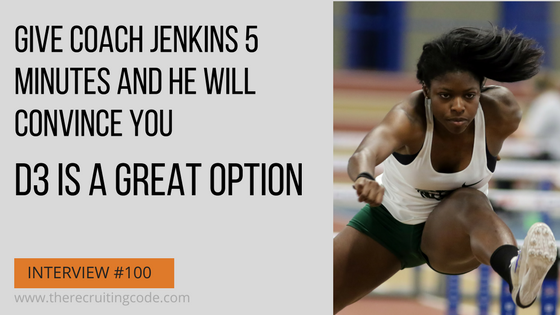Welcome to Interview #100
I am pleased to share with you the wisdom of NCAA Men and Women’s Track and Cross Country Coach, of Piedmont College, Jeff Jenkins.
* A side note: The Recruiting Code began on Valentine’s day, 2015. Over the past three years we have had 750,000 people just like you visit the site. I am humbled and grateful to the 100 coaches, athletes, and other experts who have assisted in making the recruiting process less of a mystery. Thanks Coach Jenkins for being #100!
Jeff Jenkins is in his fourth year at the helm as Head Track & Field and Cross Country Coach. He has already accrued three USA South cross country championships in his first three seasons with the Lions and Lady Lions.
What can or should high school athletes do from their end to get on your radar screen? What are the important steps for an athlete to get noticed by you?
Initially, the athlete’s marks will be what get them noticed, but that only goes so far. We can really only contact a small percentage of athletes that hit marks within our recruiting range. For example, in the men’s 800m, we look for boys that run faster than 2:05. Last year alone, over 1000 junior boys ran faster than 2:00. This same phenomenon applies to all other events in track & field as well.
In order for an athlete to get on our radar, they need to reach out to us and show genuine interest in our program. Additionally, we need student-athletes in all events with the ability to improve at the collegiate level. In my men’s 800m example, in order to qualify for NCAA Division III Championships in outdoor track & field, he will need to run 1:52.5 or better in most years. It’s unlikely that we will bring in athletes of that caliber out of high school because most NCAA Division I programs would offer that kid a large percentage scholarship, so we want to see a desire to compete at that level and an appreciation for what type of commitment it takes to be successful.
Where do Division 3 track & field and cross country coaches most often find athletes for their teams?
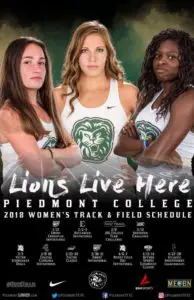 Geographically, most of the student-athletes in our program are from the state of Georgia, but we usually cover 5-7 other states on any given year.
Geographically, most of the student-athletes in our program are from the state of Georgia, but we usually cover 5-7 other states on any given year.
We have a variety of methods for finding these prospects. Some come to us, some are on online recruiting networks and others are contacted by us directly.
Athletically, our best athletes aren’t always our most talented recruits out of high school. Culturally, we probably have one of the most diverse rosters in collegiate athletics. With that said, there is no one type of athlete that we recruit. Our diversity is what makes us successful.
I coached at the Division 3 level for seven years. One of the biggest concerns from parents was financial. Parents would tell me because Division 3 does not offer athletic scholarships they can’t afford it. What would you say to those parents?
This is the scenario that Division III coaches hate. On more than one occasion, I’ve had prospects tell me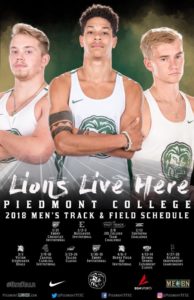 that we were their top choice, but that an NAIA or Division II school offered them an athletic scholarship, so they’re going there. After further investigation, I would learn that the bottom-line figures are sometimes higher, but the perception is that if they are receiving financial aid through athletics, then it must be less expensive.
that we were their top choice, but that an NAIA or Division II school offered them an athletic scholarship, so they’re going there. After further investigation, I would learn that the bottom-line figures are sometimes higher, but the perception is that if they are receiving financial aid through athletics, then it must be less expensive.
An athletic scholarship can cause a student-athlete (and their parents) to overlook every single other factor including the major that the student wants to study.
What I tell prospects and their families is to treat the process like they’re buying a car. Analytically, look for the parts that are important to you. In car buying, that may be fuel economy, safety features and passenger capacity. In the college search, that could be location, major and dining options among other factors.
Next, evaluate the college based on how it feels. Take a “test drive” by visiting the campus a few times to try and develop an understanding for life on campus.
At the end, there will be the discussion of financial aid. In our case, we often find that our bottom-line cost after merit-based and need-based scholarship is lower than those of our NAIA or Division II counterparts with partial athletic scholarship.
You are coaching both the men’s and women’s cross country and track & field programs. This is common for Division 3. Bigger programs will separate coaches for cross country and track. What should athletes look for as far as coaching staff, number of coaches involved in Division 3? What is important regarding the coaching staff for a good collegiate experience?
That is actually untrue. I don’t know of any bigger programs that have a coach that only coaches cross country, but doesn’t coach the distance runners in track.
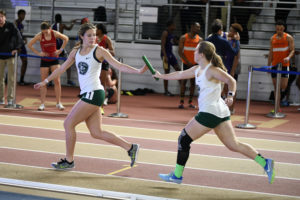 As the head coach, I am responsible for all aspects of the program, but I have to find assistants that are talented in areas that I am not. I have to delegate the event groups to specialists in those areas and they have complete autonomy over how they train and develop those athletes. We have a sprints/hurdles coach, a jumps/multis coach, a throws coach and I coach the distance/mid-distance runners.
As the head coach, I am responsible for all aspects of the program, but I have to find assistants that are talented in areas that I am not. I have to delegate the event groups to specialists in those areas and they have complete autonomy over how they train and develop those athletes. We have a sprints/hurdles coach, a jumps/multis coach, a throws coach and I coach the distance/mid-distance runners.
If we come across an athlete that crosses over between event groups, then we work together to develop the best training periodization for that person. Each event coach is responsible for recruiting the student-athletes in their event with my oversight and direction and I have to delegate responsibilities for the other aspects of the program such as budget, travel, equipment, etc.
Prospective student-athletes need to be thorough in their research on their coach just like the coach must properly vet the student-athlete. If you’re a jumper, you may not want to compete for a coach that coaches cross country as well. Even if the coach has a full understanding of the event, it is impossible to coach everything effectively. Think critically about that coaches style of leadership and ask the athletes specific questions that would help you determine how it would be training and mentoring under that coach.
Is Cross Country and Track & Field recruiting all about recorded data? Or is there more to it?
Our process in recruiting is almost completely about recorded data at first. We make quick decisions about
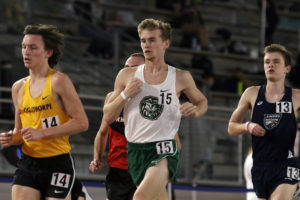 prospects based on marks on the track and in the classroom. Once we sift through prospects using data, we begin an entirely different process of judging intangible factors such as character and work ethic. We’ve turned down athletes with excellent “recorded data” because of posts on their social media profile. In my experience great data does not always translate to good data at the college level.
prospects based on marks on the track and in the classroom. Once we sift through prospects using data, we begin an entirely different process of judging intangible factors such as character and work ethic. We’ve turned down athletes with excellent “recorded data” because of posts on their social media profile. In my experience great data does not always translate to good data at the college level.
What are a few of the most common mistakes that prospective-student athletes make in the college recruiting process?
- They wait too late to begin.
- They make premature, uninformed decisions.
- They don’t effectively communicate.
What are some things that would keep you from recruiting an athlete?
Communication deficiencies, foul social media content and lying about their marks are probably my biggest pet peeves.
What do you wish your incoming freshmen knew before they trained with you for the first time?
I wish I could properly portray the challenges that they will have to overcome. During the recruiting process, they’re often so blinded by the excitement of being a college athlete that they don’t seem to hear me talking about morning practices and doubles. We try to teach them to “love the grind” or be more focused on the process than the results.
Before you were a coach, you were an athlete yourself. Can you tell us a bit about your own recruiting story? Why did you end up choosing Huntingdon College?
I came to the sport very late. I wasn’t a great runner in high school, but had several opportunities after creating a profile on a recruiting network. I could have gone to a struggling Division I program or several other small JUCO/NAIA schools. I chose Huntingdon, a school I’d never heard of before then, because the coach sold me on the idea of contributing to a team, not because of how good I could be individually. That was very refreshing and we won three conference titles in cross country during my four years.
How did your coach at Huntingdon impact your life?
There are times when I despised him. He seemed to push me harder than a lot of my teammates and never seemed satisfied when I performed well. At the time, I hated it, but I realize now that he was being athlete-centered by adapting his coaching style to each individual. If he felt that someone was motivated by being told they couldn’t do something, he used it for them, but not for others that would be turned away by that style. There are a lot of things I do differently, but his leadership has played a monumental role in my development as a young coach. He (Nate Rucker) moved to Iowa to coach at UIU, but he and I talk almost daily.
If you could go back and live out your athletic career, what would you do differently?
I don’t have any major regrets, but I wish that I would have started the sport sooner and developed myself 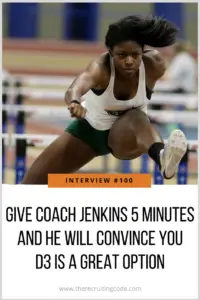 more aerobically. I wish I had started taking the off-season training more seriously earlier in my career instead of waiting until my last two seasons.
more aerobically. I wish I had started taking the off-season training more seriously earlier in my career instead of waiting until my last two seasons.
What gives you the most joy or satisfaction as a coach?
I love PR’s (personal records), winning championships and breaking records, but nothing is more satisfying than knowing that I’ve impacted someone outside of their running career. This usually comes in the form of a call from an ex-athlete.
I set goals as a coach and above all of the athletic success I want my teams and athletes to have are things like, “Get invited to an athlete’s wedding” and “Help a first-time college student get into grad school”.
Bonus Question: Is there anything important that you would like to share directly with high school athletes or cross country and track athletes in particular as they navigate the recruiting process?
Beyond what I’ve already mentioned, I would just say to enjoy the process. Take the advice from those who have been there seriously or else you’ll be giving the same advice regretfully to another senior after you didn’t take it.
You can find out more about Coach Jenkins and Piedmont Track and Cross Country by clicking here.
Next, check out: Great Athletes Avoid Division 3 Schools. True or False?
LIKE WHAT YOU READ?
Please take a moment to share this on social media to benefit other prospective college athletes, by clicking on the “sharing is caring” buttons below.
Thanks,
Bryan


